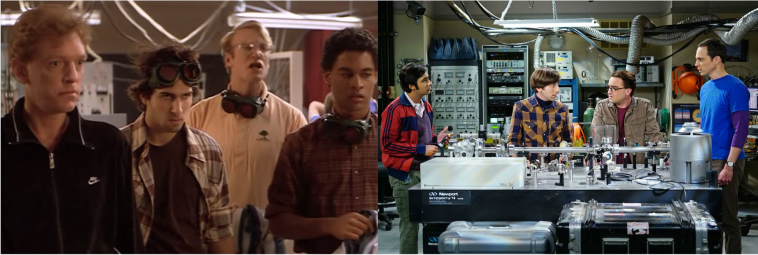Director: Ngozi Onwurah
Writer: Ngozi Onwurah
Country: UK
Language: English
Women in the production team:
Co-Producer: Valentine Nonyela
Editor: Liz Webber
Assistant Camera: Simone Horrocks
Production Designers: Miraphora Mina, Lindi Pankiv
Makeup Artist: Lindsay Swift
Costume Designers: Claire Ditchburn, Fennella Magnus, Sarah Wiltshire
Script Supervisor: Sarah Lane
Available to rent, stream, or buy: Watch online for free on Youtube
This review contains **SPOILERS**

Review:
Welcome II the Terrordome was Nigerian-born and British-raised Ngozi Onwurah’s debut feature and the first feature-length film directed by a Black British woman. I first saw Welcome II the Terrordome on film as part of the Celebrating Women In Global Cinema season at HOME in 2019; I had chosen for the film to be screened as part of my course Women in Science Fiction without seeing it, in part because it was the only woman-directed movie we could get the rights to screen. But I discovered that it is a raw and challenging piece of indie cinema that has been shamefully overlooked. Seventeen years after its completion, Welcome II the Terrordome’s stark and unrelenting relevance continues to make it a shocking and thought-provoking film that is worth your time and your money.
This speculative fiction imagines the worst future extrapolated from what Ngozi Onwurah describes as the ‘pure anger of a 24-year-old black woman in Britain’ in the 1990s. Terrordome is, in her words, ‘super ambitious, super dense, with tons of things put into it: African storytellers, Hip Hop, I have lots of stories’. With its title taken from the 1990 Public Enemy track ‘Welcome to the Terrodome’, the soundtrack and score acts as a hip-hop greek tragedy chorus providing foreshadowing and commentary on events as they unfold. As a post-LA Riots political allegory it forges links between near-mythical pasts and imagined futures to provoke purposely uncomfortable questions about contemporary race relations, police brutality, and the limits of ‘progress’.
You say it was the future, it was the future 20 years ago, and actually it was the future. I think what’s happening in retrospect is that the world is 10 times worse than Terrordome, who would have thought we would be where we are now.
– Ngozi Onwurah (2019)*
Very much on the edges of what might be considered science fiction, Terrordome is a visibly ultra-low-budget movie that has a grainy style that is distracting at first but ultimately gives the film a powerful poverty-inflected political realism. It captures the zeitgeist and the perspective of a British-raised young black woman in the 1990s and although it might not be mainstream SF, it is a clear example of Afrofuturism.
As Ytasha Womack (2013: 9) explains, Afrofuturism ‘combines elements of science fiction, historical fiction, speculative fiction, fantasy, Afrocentricity, and magic realism with non-Western beliefs. In some cases, it’s a total revisioning of the past and speculation about the future rife with cultural critiques.’ This merging of past, present, and future is central to Terrordome and its continuing power, as it not only presents but challenges notions of peaceful protests and self-preservation.
The future dystopia of the Transdean ghetto, known locally as the Terrordome, sees black British characters essentially imprisoned and segregated from ‘whitesville’. Although the film is narrated by a man (Black Rad/Felix Joseph) it is a distinctly woman-led story – it is about Angela (actress/activist Suzette Llewellyn) and the white interloper Jodie (Saffron Burrows), their children, and the complex intersections of race and gender politics in the ghetto.

Angela’s son Hector (Ben Wynter) is killed: pushed from a window after witnessing a brutal attack on a heavily pregnant Jodie. Angela goes on a rage-fuelled almost video-game-style killing spree: a magical-realist sequence where she makes almost impossible shots at police officers with an old, poorly maintained handgun. Jodie, pregnant by Angela’s brother Spike (Valentine Nonyela) following an escape from her abusive skinhead boyfriend Jason (Jason Traynor), is attacked by her former lover.
The attack on Jodie is so savage that she miscarries her biracial child, and in a shocking sequence she is left to deliver and mourn her child alone. Prior to this, Angela and Spike’s sister Chrissie (Sian Martin) attempts to rescue Jodie and the unborn child by taking her to their unsubtly-named grandmother Rosa Parkson (Cynthia Powell). But Rosa rejects Jodie and her unborn great-grandchild. Chrissie defends Jodie explaining that it was white men who attacked her because of her relationship with Spike. But Rosa coldly and calmly responds:
So, are we supposed to be grateful? Are we supposed to raise up our hands? And say: thank you, Missy. Thank you very much for getting your hands dirty. For 60 years, I have sat by and taken their shit, her people’s shit. Do you hear me? No more Chrissie, no more. Enough is enough.

The sequences of a distraught Jodie in labour and cradling her stillborn baby are intercut with scenes of Angela in police custody being stripped of her rights, her dignity, and finally her life. The white woman who transgresses the boundary is left to mourn her child alone, but she is ‘free’. The black woman’s only path to freedom seems to be death.
Welcome II the Terrordome is fascinatingly bookended by references to the Ibo landing myth. Like a twisted version of the film world of Wizard of Oz (1939) the same actors are used in both past and future with slaves later appearing as the inhabitants of the Terrodome ghetto and their white captors as their oppressors, showing essentially how little has changed in race relations. The opening prologue reproduces the Ibo landing myth – after enacting mutiny, drowning the slave traders, and overthrowing and grounding a slave ship, rather than becoming slaves 75 Nigerian Ibo (or Igbo) women, men, and children chose to commit collective suicide by walking out into the marsh. It is considered by some African-Americans and in Gullah folklore as the first American freedom march, and in this opening sequence of Terrordome it appears as a dignified choice and a powerful story of resistance.

Yet, at the end of Terrordome we return to this mythic space – but past and future merge as the industrial setting of the Terrordome ghetto is the background to a powerful image of Suzette Llewellyn as both (?) Angela and the Ibo woman breaking her chains. She is dead – sacrificed in order to be saved from slavery and symbolically hanged by white police, seemingly without trial. As with her son in a previous scene, the actress is seen back in the waters of the coast of the American south, but this time she and her tribe are emerging from the water. Onwurah’s ending is quite ambiguous – does it suggest that the Ibo (and by extension dead Terrordome inhabitants) have emerged on ‘the other side’ now free from their lives of inevitable suffering, or does it reject the notion of noble sacrifice? Perhaps it is a call to action rather than a peaceful acceptance of what cannot be changed.
Terrordome was described by a white male critic in a 1995 Variety review as an ‘angry first feature‘. But for Onwurah, despite connotations concerning the stereotype of the angry black woman, anger is something that audiences should be confronted with. She argued in the HOME interview that our news is sanitised and fleeting but that Terrordome was intentionally desanitising, angry, and direct. She was aware of the critiques of Terrordome at its release and suggests that it is perhaps because the film does not conclude with a neat ending with the ‘space for everybody at the end’ that is expected by white audiences (and reviewers).
As an Afrofuturist intervention Welcome II the Terrordome centres black stories into a predominantly white British cinema. But like her characters of both past and future, Ngozi Onwurah does not settle for a storyworld that ends hopefully or one than even resolves. Onwurah has no time for your discomfort, and why should she.
Listen below to our podcast episode Defining SF is Hard where we discuss Welcome II the Terrordome, Tank Girl (1995) and Évolution (2015).
What to watch next from Ngozi Onwurah:
Coffee Colored Children (1988, 17 min.) – Rent on BFI Player
The Body Beautiful (1991, 23 min.) – Free on BFI Player
Flight of the Swan (1992, 12 min.) – Free on BFI Player
White Men Are Cracking Up (1994, 20 min.) – Free on BFI Player
And Still I Rise (1993, 30 min.) – Buy on DVD
Only four black women working in the UK have had their films theatrically released – Ngozi Onwurah, Amma Asante, debbie tucker green, and Destiny Ekaragha. Their work is wide-ranging including popular films like Gone Too Far! (Ekaragha, 2013), Second Coming (green, 2015), and A United Kingdom (Asante, 2018).
Further reading:
Varaidzo (2017). Ngozi Onwurah: The forgotten pioneer of black British film. Gal-dem [online]. 20 June. URL: https://gal-dem.com/ngozi-onwurah-the-forgotten-pioneer-of-black-british-film/
Emilie Herbert (2018). Black British Women Filmmakers in the Digital Era: New Production Strategies and Re-Presentations of Black Womanhood. Open Cultural Studies 2(1): 191–202. Available open access.
Women Make Movies director profile for Ngozi Onwurah.
*Interview with Rachel Hayward for the HOME podcast: In Conversation: Director Ngozi Onwurah, HOME Podcast, Friday 8 Feb 2019. https://homemcr.org/media/in-conversation-director-ngozi-onwurah/















































